It’s my pleasure today to welcome novelist and fellow Prime Writer Dinah to the blog, to talk about her Sunday Times bestseller The Tea Planter’s Wife and her latest book The Silk Merchant’s Daughter, out in paperback this Thursday, July 14th. These two novels are beautifully written, with gorgeously exotic settings, twisty-turny plots and memorable characters.
Here’s the blurb for each book:
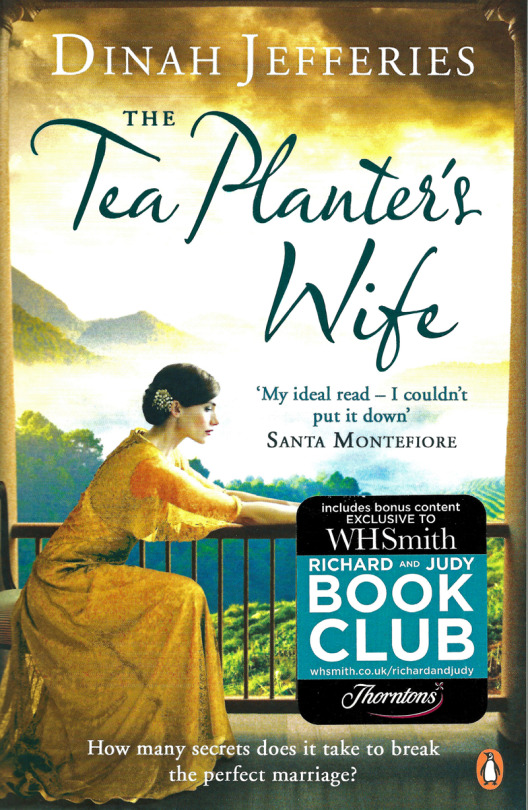
Nineteen-year-old Gwendolyn Hooper steps off a steamer in Ceylon full of optimism, eager to join her new husband. But the man who greets her at the tea plantation is not the same one she fell in love with in London.
Distant and brooding, Laurence spends long days wrapped up in his work, leaving his young bride to explore the plantation alone. It’s a place filled with clues to the past – locked doors, a yellowed wedding dress in a dusty trunk, an overgrown grave hidden in the grounds, far too small for an adult…
Gwen soon falls pregnant and her husband is overjoyed, but she has little time to celebrate. In the delivery room the new mother is faced with a terrible choice, one she knows no one in her upper class set will understand – least of all Laurence. Forced to bury a secret at the heart of her marriage, Gwen is more isolated than ever. When the time comes, how will her husband ever understand what she has done?
The Tea Planter’s Wife is a story of guilt, betrayal and untold secrets vividly and entrancingly set in colonial era Ceylon.
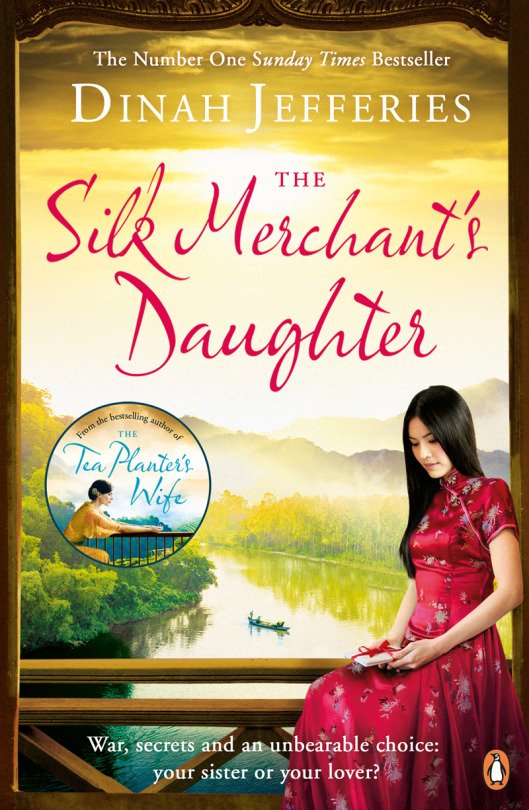
1952, French Indochina. Since her mother’s death, eighteen-year-old half-French, half-Vietnamese Nicole has been living in the shadow of her beautiful older sister, Sylvie. When Sylvie is handed control of the family silk business, Nicole is given an abandoned silk shop in the Vietnamese quarter of Hanoi. But the area is teeming with militant rebels who want to end French rule, by any means possible. For the first time, Nicole is awakened to the corruption of colonial rule – and her own family’s involvement shocks her to the core…
Tran, a notorious Vietnamese insurgent, seems to offer the perfect escape from her troubles, while Mark, a charming American trader, is the man she’s always dreamed of. But who can she trust in this world where no one is what they seem?
The Silk Merchant’s Daughter is a captivating tale of dark secrets, sisterly rivalry and love against the odds, enchantingly set in colonial era Vietnam.
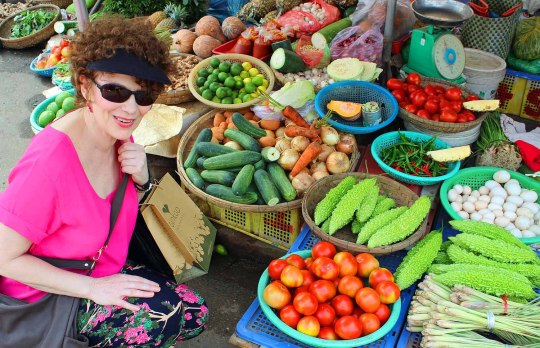
Dinah on her travels in Vietnam.
[1] All three of of your novels are set in places thatmay well seem exotic and far away to many readers i.e. Malaya, Sri Lanka and
Vietnam. Tell us about your experience of travelling in these areas. What
appeals to you about these countries and what did you find difficult about
them?
The East appeals to me because I was born in British
Malaya and lived there as a child. I go back to it in my books partly because I
love it, but also to reclaim something I felt I had lost when we came back to
live in England. What is sometimes difficult is finding evidence of the old
world rather than the new as most Eastern countries, especially the cities,
have changed radically.
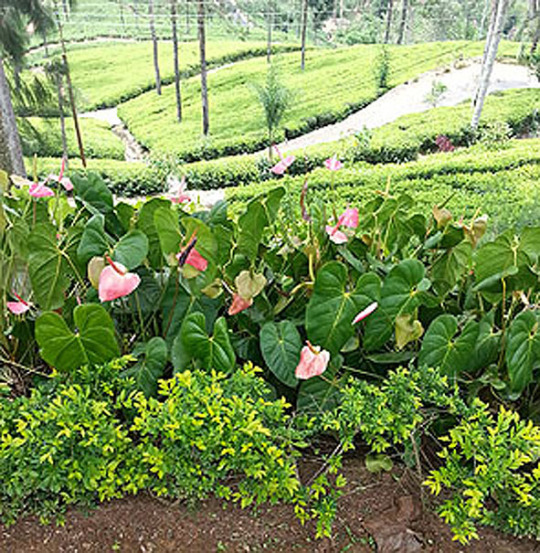
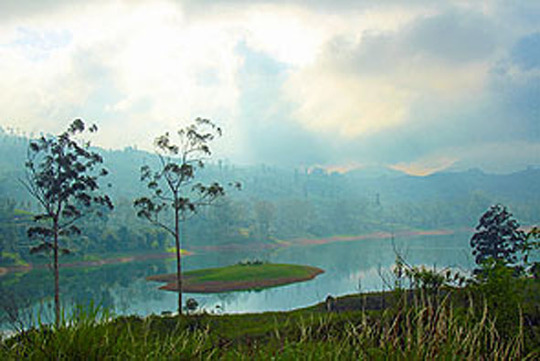
Two beautiful scenes from Sri Lanka, taken by Dinah as part of her research.
[2] Talk us through some of your research methods intosettings (time and place) and specialist subjects, like the tea and silk trades
e.g. dresses, food, landscapes, industry – the detail is wonderful, the sights,
sounds, smells etc. Did you take photos, films, note down what you could smell
etc?
I’m convinced that actually being in a country is the
best way to build authenticity into a novel and it helps convey the atmosphere enormously.
I love the intoxicating smells of the East & while I was in Vietnam I wrote
copious notes about them. I also took dozens of photos, most of which I lost
when I damaged my phone. But a great deal of my research takes place on the amazing
internet, either before or after I visit the country.
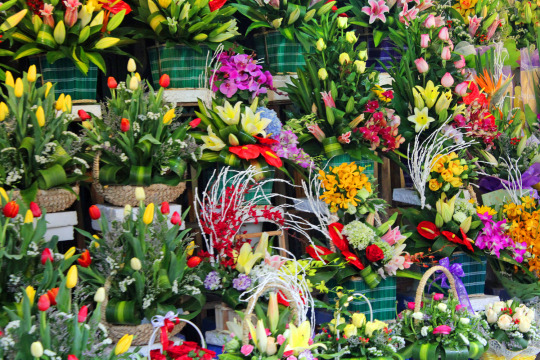
Flower seller’s stall in Vietnam.
[3] How are your research methods manifested in yourstudy or workspace i.e. do you have picture walls, piles of books, photos,
maps, files etc? Or perhaps your workspace is pristine (unlike mine)!
Pristine? Never! I like a bit of a mess with piles of
books and dozens of note books. It only gets tidied when I’m about to start a
new novel.
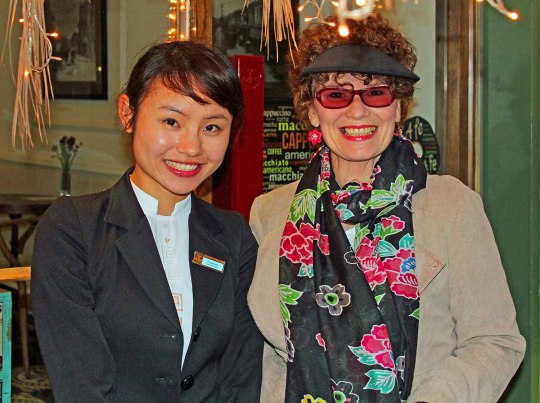
Dinah in Vietnam.
[4] How do you use planning when writing? e.g.synopsis, chapter plans, timelines, post-it notes, character profiles etc.
Just a rather long synopsis though my methods are
evolving all the time. Each book I write I plan a little bit more, but I do
like to leave a degree of looseness for whatever might occur as I go along. I
didn’t plan my first novel at all but time constraints mean it’s important now
to know what I’m doing. Ha! If I ever know what I’m doing.
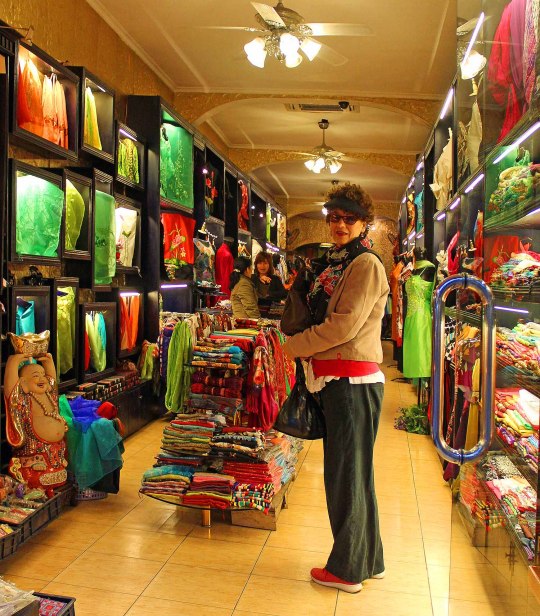
Another colourful scene from Vietnam.
[5] I was intrigued by the structure of your stories.Both novels had a four-part structure with titles for each section e.g. The
Secret (in Tea Planter) and Moon in the Water (in Silk Merchant). How did these
structural devices come about? i.e. did it come to you in the planning stage or
after writing?
The structure is the one thing I do plan. I like the
four part structure because it gives me key points where stuff HAS to happen.
And also structure is the hardest thing to alter once the first draft is done.
I speak from bitter experience!
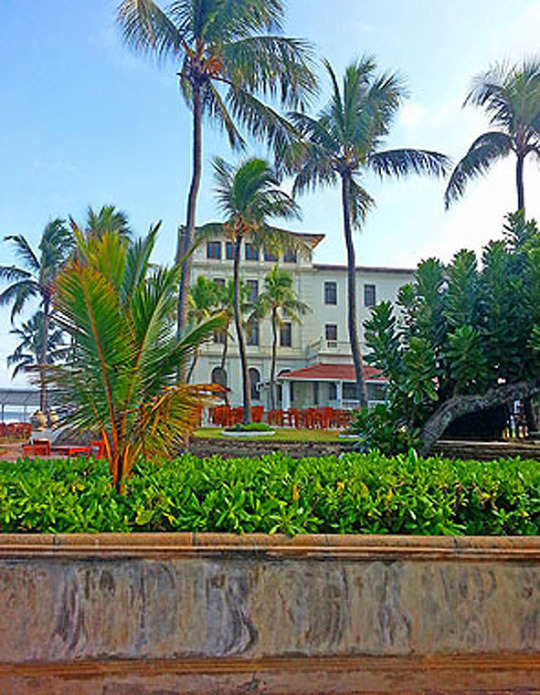
A scene from Sri Lanka.
[6] Secrets and lies – how important are these to youin your narratives?
I think very important. Don’t ask me why because I
don’t really know.
country like Sri Lanka or Vietnam as a pretty backdrop – but that’s not you! The
stories are enriched by the political and economic reality of life for the
population throughout the period of each novel. What interests you most about
these issues?
I’m mainly interested in women’s lives in the past:
how it was for them: how they coped with the limitations of their time. That
also means I need to understand what was actually going on at the time
politically and culturally. I aim to transport my reader to a time and place
that is really different, so I try to find historical periods and places that
are lesser known, and that research is fascinating.
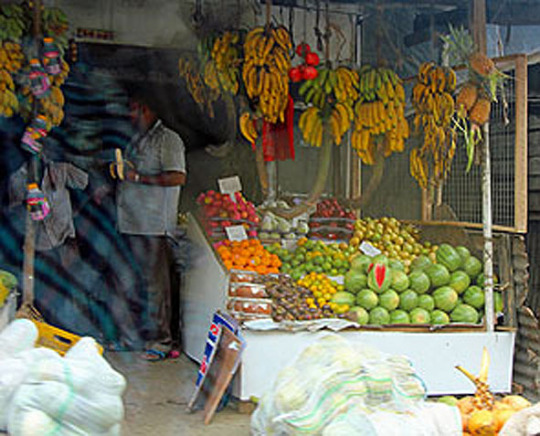
Fruit stall in Sri Lanka.
[8] What are some of the conflicts that naturally arise out of writing aboutcolonial-era countries like Ceylon and French-Indochina? And what are your
feelings about colonialism now? Was there anything to be said for it? I get the
sense that the colonials in your stories are being punished somehow for their
complicity in the system. Is there something in that?
I came from a colonial family but from a very early
age I was aware of injustices in the colonial systems. I try to cover both
sides of the argument in the books, but yes I usually come down on the side of
the colonised rather than the colonisers, though I hope not aggressively so. I
don’t go in too deeply because I like to leave space for the readers to make up
their own minds. More important to me is the emotional heart of the book and
the story. I’m all about story.

Dinah in Vietnam.
[9] There’s a theme running through both books ofethnicity, mixed-race, racism and the importance of origins. Can you explain
what fascinates you about this theme?
I came to England aged nine, not knowing why we had
left a country I loved. Although not mixed race myself – both my parents were
born and bred Brits – I didn’t fit in here and felt like an outsider. I think
themes of belonging and identity are somehow written into my DNA. My origins in
Malaya were more or less wiped out as I grew up and now I get a chance to
explore all that in my novels.
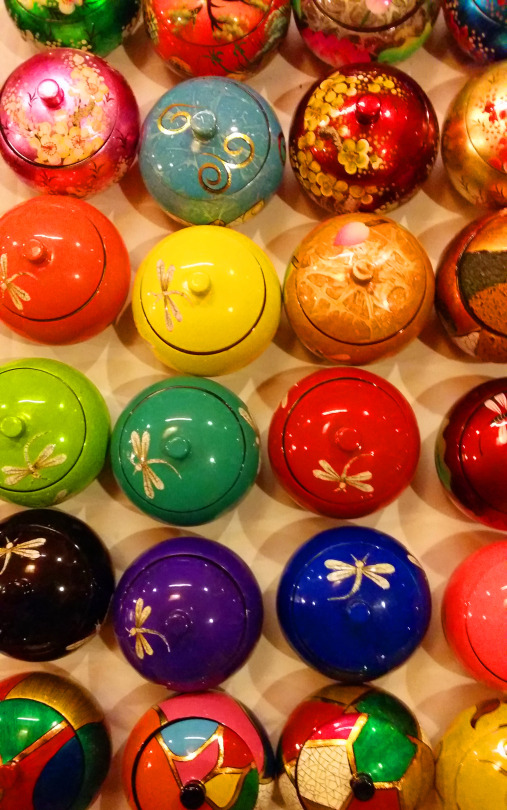
Lacquered boxes in Vietnam. (I love this picture so much!)
[10] Can you share with us anything about what you’reworking on next?
I’m writing a love story! But a love story with a
difference and it’s set in India where I went earlier this year. An absolutely
amazing country and I’m trying hard to do it, and the Hindu belief system,
justice.
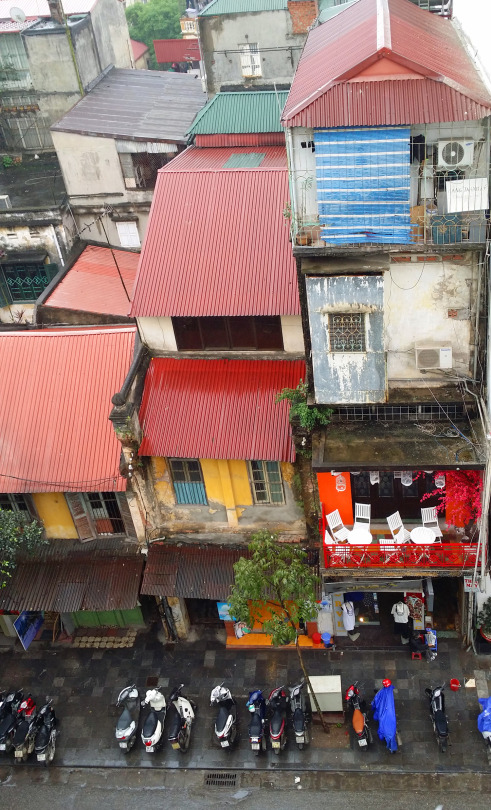
Street view from hotel in Vietnam.
Thanks so much to Dinah for such fascinating answers about her fascinating life and her fascinating books. 🙂 And an extra thank you for providing all of the beautiful images of her travels.
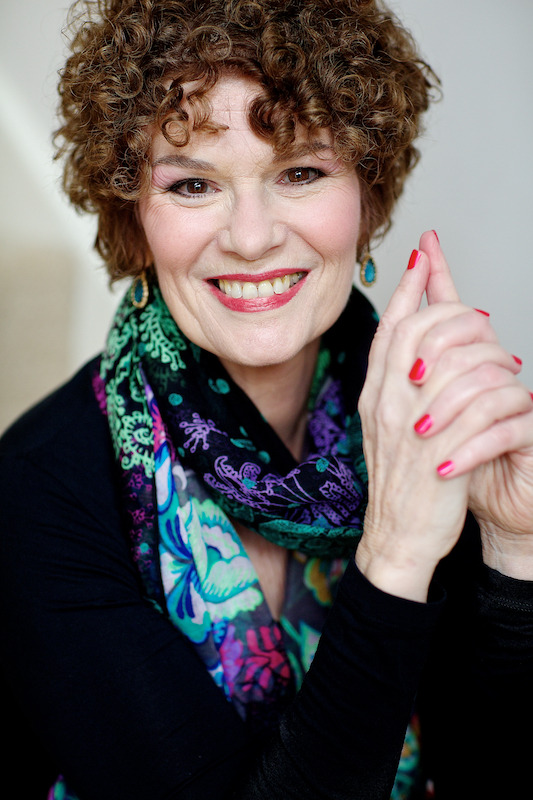
You can find Dinah online here:
http://www.dinahjefferies.com/